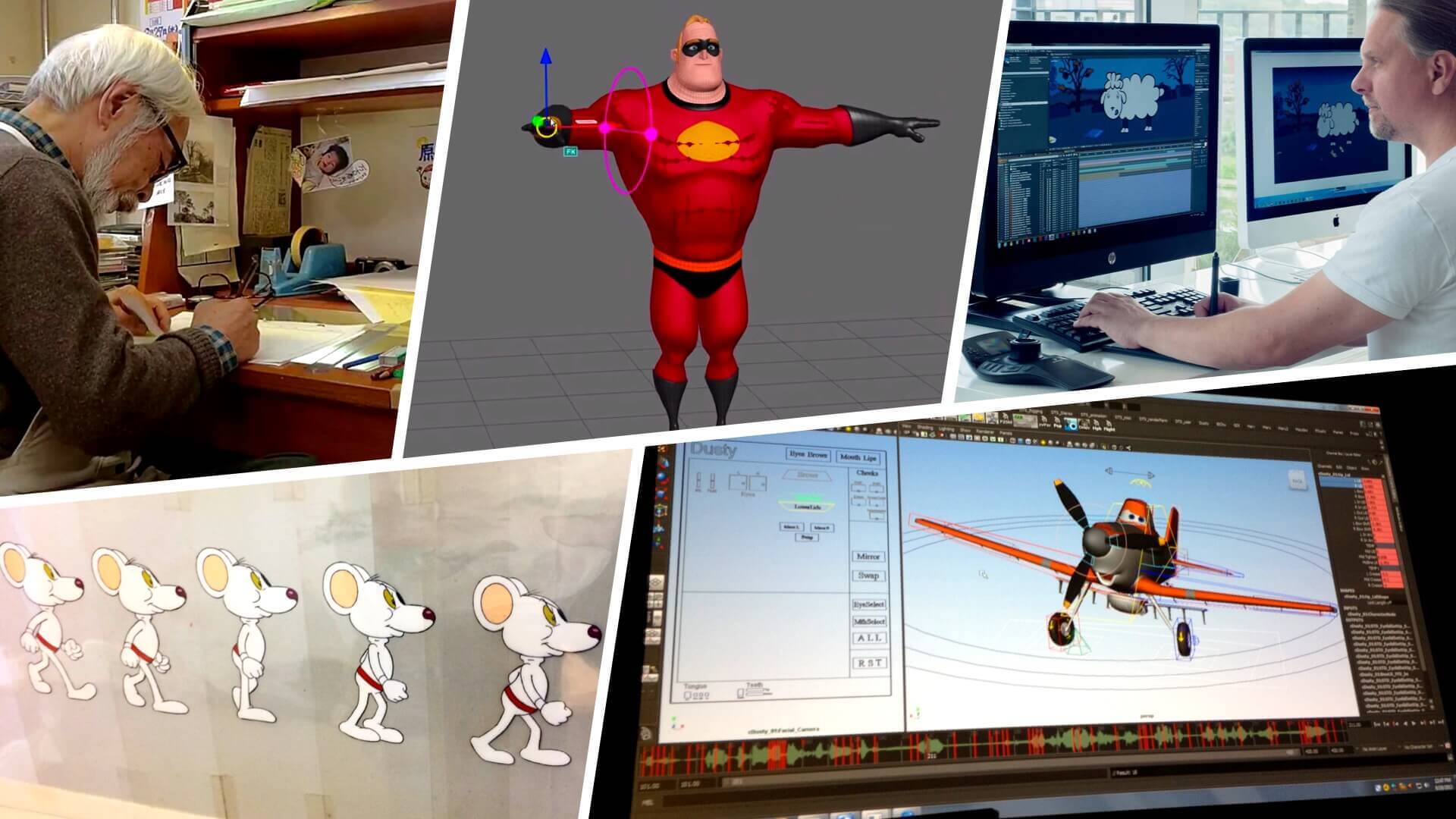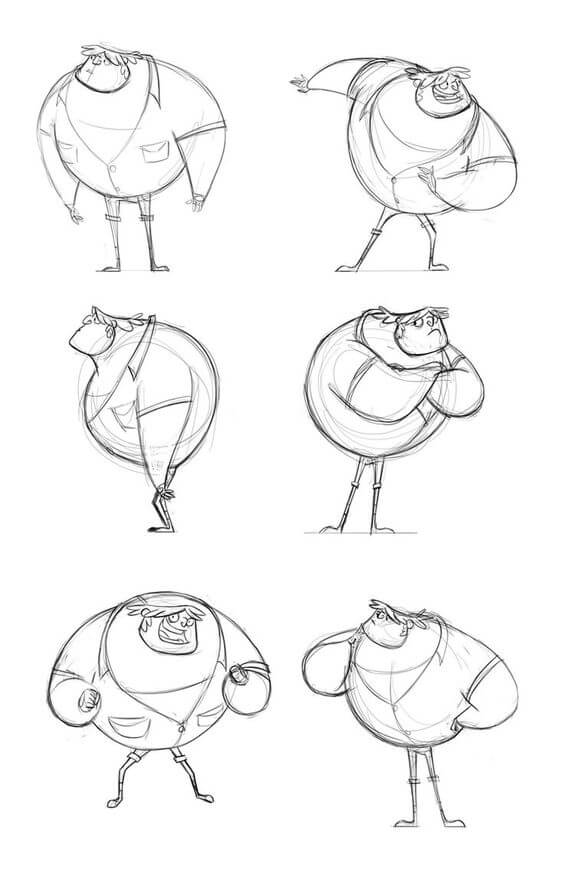The world of animation is vast and exciting, filled with endless possibilities for creativity and storytelling. At the heart of this world are animators, skilled artists who bring characters and stories to life through movement and expression. In this article, we’ll explore the fascinating world of animators. We’ll examine their job descriptions, uncover the skills required to excel in this field, and discover what makes this profession truly captivating.
What is an Animator in Media?
First, let’s define an animator
When people think of animators, they often envision individuals sketching away at their drawing boards, creating magical worlds and characters. While this is part of it, the reality is far more complex and fascinating.
ANIMATOR DEFINITION
What is an animator?
An animator is a professional who creates multiple images, known as frames, which, when sequenced together, rapidly create an illusion of movement known as animation. This art form can be used in various forms of media including film, television, video games, and the internet. The term 'animator' comes from the Latin word 'anima,' meaning 'life.' Therefore, an animator can be considered as someone who brings life to static images by making them move in a fluid and dynamic manner.
There are various types of animators in the industry:
2D Animators: They create sequences of images on two-dimensional spaces. These images give the impression of motion when displayed in succession. Traditional cartoon animation often follows this style.
3D Animators: They create characters and scenes in three-dimensional spaces that can be rotated and moved like real objects. Many films and video games now rely on 3D animation.
Stop Motion Animators: They create animation by physically manipulating real objects and taking photographs frame by frame, giving the illusion of movement. Examples can be found in films like The Nightmare Before Christmas and Coraline.
Each type of animator uses different techniques and tools, but they all share the common goal of creating engaging, moving art.
Animator Duties:
- Storyboarding
- Designing Characters
- Animating Scenes
- Editing and refining
Animator Description
What does an animator do?
An animator has the incredible ability to breathe life into characters, objects, and environments in a wide range of mediums like film, TV, and video games. By creating a sequence of images displayed rapidly, they can make these creations come alive with movement. The role of an animator can be incredibly diverse, varying depending on the specific project and industry they work in.
Concept Development
Animators often participate in the early stages of project development. They brainstorm ideas, conceptualize scenes, and create rough sketches or models. This stage may also involve research to ensure that designs are accurate and authentic.
Concept Development in Animation
Storyboarding
Animation storyboarding is a key responsibility for many animators. They create a visual script of sorts, with illustrations or images displayed in sequence for the purpose of pre-visualizing the animation or motion graphic. This helps map out the structure of the narrative, decide on its visual style, and organize the production schedule.
Designing and Building Assets
Animators design and build the assets for the animation. This could include characters, props, or environments. In 3D animation, this involves modeling the asset in three dimensions and then texturing it to make it look realistic.
Animation
The core duty of an animator is, of course, animation. They bring the assets to life by creating the illusion of movement. This could be through traditional frame-by-frame animation, 3D computer animation, or even stop-motion animation.
Rigging
In 3D animation, before an asset can be animated, it must be rigged. Rigging is the process of adding a skeleton to the model so it can move in a realistic way. This is a highly technical task that requires a strong understanding of both anatomy and mathematics.
In the Pixar movie Soul, the realism of characters’ movements in the animation was achieved through a meticulous rigging process.
How Pixar's Movement Animation Became So Realistic
Lighting and Rendering
After the animation is complete, it needs to be lit correctly and then rendered. Lighting involves placing lights in the 3D environment to mimic real-world lighting conditions. Rendering is the process of turning all the 3D data (models, textures, lighting, and animation) into a 2D image or video.
Why Lighting Animated Movies Is So Complicated
Compositing and Editing
Once all the elements are animated and rendered, they need to be composited together. This can involve adding effects, adjusting colors, or adding transitions between shots.
The final step is editing, where the animation is cut together to match the timing of the soundtrack and to ensure the story flows well.
Revisions
Based on feedback from directors, clients, or other team members, animators may have to make revisions to their work. This could involve tweaking animations, changing the lighting, or even redesigning characters or environments.
These responsibilities can vary depending on the specific role an animator has on a team. Some animators may specialize in one area, such as character animation or lighting, while others might be generalists who work on all areas of the animation.
Animator Job Responsibilities
How to become an animator
The journey to becoming an animator often starts with a passion for art, storytelling, and technology. Aspiring animators should begin by developing their artistic skills and familiarizing themselves with the tools and software used in the industry. This can be done through self-study, formal education, or a combination of both.
On-The-Job Training
On-the-job training is invaluable for budding animators. Many entry-level positions in animation studios involve assisting experienced animators and getting hands-on experience with the tools and techniques of the trade.
This real-world experience can supplement classroom learning and provide practical skills that are highly valued by employers.
Schooling Options and Courses for Aspiring Animators
Aspiring animators have various educational paths. Some pursue a Bachelor's degree in Animation or Visual Effects, covering drawing, 3D modeling, computer graphics, color theory, and animation software.

Animator Jobs
Alternatively, shorter certificate programs and online courses on animation skills are available on platforms like Coursera, Udemy, and LinkedIn Learning. Regardless of the chosen path, students must build a strong portfolio to showcase their skills to employers.
Importance of Internships in Gaining Practical Experience
Internships provide aspiring animators with an opportunity to gain practical experience, network with professionals in the field, and potentially secure future employment.
Many animation studios and media companies offer internships that allow students to work on real projects under the guidance of experienced animators.
Apprenticeships and How They Can Help
Apprenticeships are another excellent way to gain practical experience in animation. Unlike internships, apprenticeships are usually longer-term and involve more in-depth training. Apprentices work closely with a mentor to learn the craft of animation from the ground up.
Becoming an animator involves a combination of education, practical experience, and continuous learning. It's a dynamic and creative field that offers numerous opportunities for those willing to put in the time and effort.
Related Posts
What is an Animator Paid?
Animator salary
The salary of an animator can vary widely depending on several factors. As of 2022, the average salary for an animator in the United States is approximately $75,000 per year according to the U.S Bureau of Labor Statistics.
Several factors can influence an animator's salary.
Experience
As with many professions, experience plays a significant role in determining an animator's salary. Entry-level animators typically earn less than their more experienced counterparts. As animators gain experience and build their portfolios, they can command higher salaries.
Location
Where an animator is located can also impact their earnings. Animators in cities with a high cost of living, or regions with a high concentration of animation studios, such as Los Angeles or New York, typically earn more than those in other areas.
Specialization
The type of animation work an animator does can also impact their salary. For example, animators working in certain industries, like advertising or video games, may earn more than those in other sectors.
The salary of an animator can also vary depending on their specific role or specialization within the field. For instance, character animators or visual effects artists often earn more than generalist animators due to the specialized skills these roles require.
Similarly, 3D animators typically earn more than 2D animators due to the increased technical complexity of 3D animation work.
Animator Career Path
Find animator jobs
Seeking employment in the animation industry may seem daunting, but it doesn't have to be. With the appropriate resources and tactics at your disposal, you can triumph in the job market.
Online Job Portals
A good starting point for your job search is online job portals. General job sites like Indeed, Glassdoor, and LinkedIn regularly post animator job listings. You can set up job alerts on these platforms to receive notifications for new job postings that match your criteria.
Industry-Specific Websites
In addition to general job portals, there are also websites that specialize in creative jobs, including animation. Sites like Animation World Network (AWN), CreativeHeads, and AnimatedJobs are excellent resources. These websites not only list job opportunities but also provide industry news and resources that can be beneficial for your career development.
Direct Applications
Consider applying directly on animation studios' websites. Most major studios have a careers page where they post job vacancies. Even if there are no current openings, some companies allow you to submit a general application or portfolio for future consideration.
Networking Events
Industry events such as animation festivals, workshops, and conferences are great places to network and learn about job opportunities. Participating in these events can help you meet industry professionals and potentially discover unadvertised job openings.
Social Media
Don't underestimate the power of social media in your job search. Platforms like Twitter and LinkedIn are often used by recruiters and companies to announce job vacancies. Following your favorite studios and industry professionals can keep you in the loop about new opportunities.
Online Communities and Forums
Joining online communities and forums like CGSociety, Reddit's r/animation, and the 11 Second Club can also help you in your job search. These platforms allow you to engage with other animators, share your work, get feedback, and learn about job openings.
To build a successful animation career, you need education, practical experience, and a thirst for learning. Navigating the job market is easier with online resources, job portals, social media, and networking events.
But the secret sauce is perseverance, creativity, and dedication to honing your craft. Keep refining your skills, expanding your network, and staying updated on industry trends.
Up Next
Discover more filmmaking roles
The role of an animator is one that combines technical and creative skill. To continue through our series of the various filmmaking roles and positions, you can explore similar jobs like cinematographer, editor, or VFX supervisor. Or you can jump over to our Film Crew Index to browse the entire range of filmmaking roles. Understanding what everyone’s role on a film set is will help make you a better overall filmmaker and a more efficient crew member.

